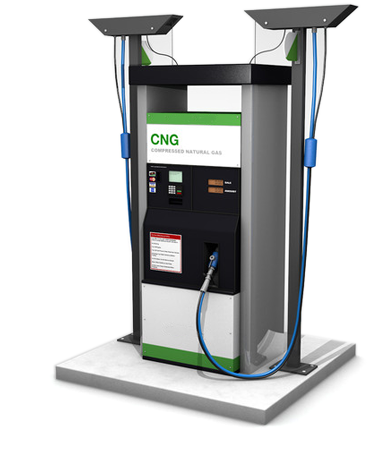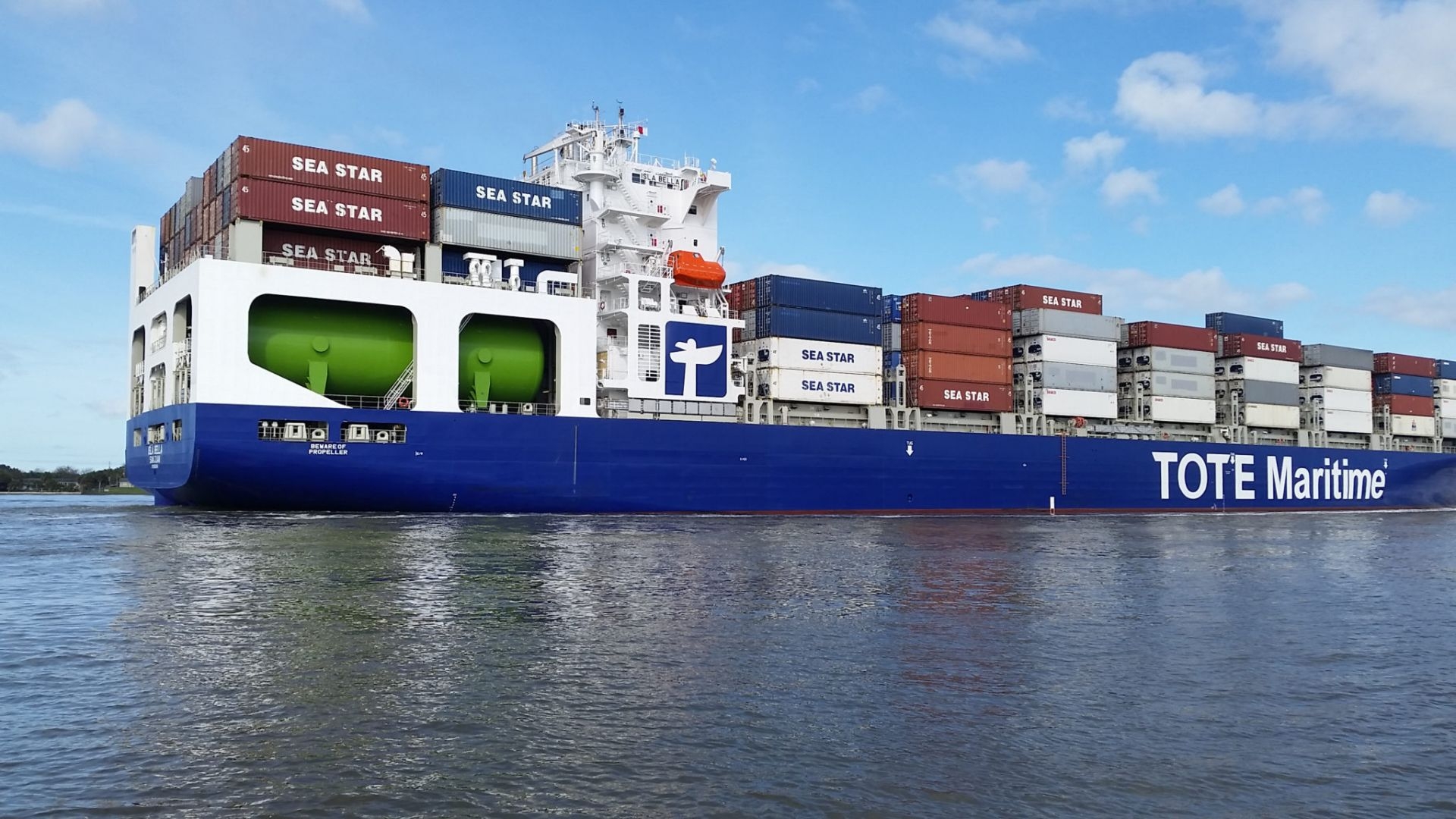Trucks Are Not the Only Nat Gas Converts
 There is quite a bit of noise being made about using either Compressed Natural Gas (CNG) or Liquidfied Natural Gas (LNG) as a motive fuel for the US fleet of over-the-road trucks. No wonder, as the natural gas industry seeks demand for the bountiful supply of natural gas, and the current over-supply is depressing the price of the fuel.
There is quite a bit of noise being made about using either Compressed Natural Gas (CNG) or Liquidfied Natural Gas (LNG) as a motive fuel for the US fleet of over-the-road trucks. No wonder, as the natural gas industry seeks demand for the bountiful supply of natural gas, and the current over-supply is depressing the price of the fuel.
A viable distribution network is the challenge. While it is economical to build pipelines to feed large-scale power generation to create electricity, distributing natural gas, either as a gas or as a liquid, to over 100,000 retail locations across the country is a much bigger challenge. The success of NG in trucks is limited to where an infrastructure exists, as it does in Southern California. There are a total of 153 CNG refueling points in the entire state of California that are open to the public (with conditions, like special fuel payment cards).
If, as a country, we are going to encourage the use of alternative fuels, the supporting infrastructure has to appear. That infrastructure will not appear by magic; it will require large investments with guaranteed returns. Frankly, the investors behind that infrastructure are going to look for the demand that guarantees the return if they are going to risk the cash needed to build the network. Without the network, we will not see over-the-road trucks convert to LNG or CNG soon.
Chicken or egg? Perhaps the answer is the initial use of LNG in large-motive power applications like trains and ships?
Ship Line Conversion - Real or Just Profit Enhancement?
Looks like one Jones Act shipping line is making the move to LNG. On August 3, 2012, TOTEM, a US Flag container and trailer shipping line, announced that it had received a conditional waiver from the EPA exempting it from the current Emissions Control Area (ECA) for fuel sulfur content while it worked on converting its ships to burn alternative fuels.
 In this scenario, TOTEM gets a waiver, allowing it to burn traditional bunker fuel (typically 35,000 ppm sulfur) in place of Low Sulfur Diesel (LSD – 1,000 ppm) that is required under the current US implementation of MARPOL regulations while TOTEM works to convert two ships to use LNG as the primary fuel. The details of how many ships are included in the waiver are unclear, but it appears that the entire fleet is exempt under the waiver while TOTEM works to convert the two ships to LNG. If true, this gives TOTEM a strong cost advantage in this segment of Jones Act trade, as its competitors still have to use LSD.
In this scenario, TOTEM gets a waiver, allowing it to burn traditional bunker fuel (typically 35,000 ppm sulfur) in place of Low Sulfur Diesel (LSD – 1,000 ppm) that is required under the current US implementation of MARPOL regulations while TOTEM works to convert two ships to use LNG as the primary fuel. The details of how many ships are included in the waiver are unclear, but it appears that the entire fleet is exempt under the waiver while TOTEM works to convert the two ships to LNG. If true, this gives TOTEM a strong cost advantage in this segment of Jones Act trade, as its competitors still have to use LSD.
One of the purported benefits of the project is that it will help establish long-term supplies of LNG for use by other sectors of the transportation industry in the Puget Sound region. The idea is that investors will see this major demand, helping break supply barriers that constrain the growth of LNG in the transportation industries.
MARPOL is shorthand for International Convention for the Prevention of Pollution From Ships, a global agreement that seeks to reduce and eliminate ocean pollution created by ships and the shipping industries. Designed to minimize pollution of the seas, including dumping, oil, and exhaust pollution, MARPOL applies to all ships flagged under countries that are signatories to MARPOL, subject to its requirements, regardless of where they sail.
TOTEM provides a majority of the freight carriage via water from Seattle to Alaska, a valuable Jones Act trade route. While some freight can move over land from the US to Alaska via Canada, the water route of moving trailers and containers is the preferred method.
The new LSD regulations took effect on August 1, 2012, even as lawmakers from Alaska worked hard to get the regulation blocked. The argument was that the regulations increase shipping costs to Southeast Alaska and South Central Alaska by as much as 8%, harming Alaskans and the state’s tourism sector. Freight carriers openly said the EPA’s requirements force rate increases on goods transported to the state.
“I have been urging the EPA for months to work with the freight and cruise ship industry to lessen the economic burden that the new ECA rules will impose on Alaskans,” U.S. Senator Lisa Murkowski (R-AK) said. “While this deal helps one company, it does not address who will pay for the additional investments and costs required for TOTEM and others to meet the new fuel standards, a total that could run into the hundreds of millions of dollars. My fear is that the total costs of compliance will simply be passed on to Alaskans.”
Set aside the regulatory rhetoric for a moment, and consider the economic impact. If the ship lines must convert to a more expensive fuel, such as LSD, then the cost of conversion to LNG may offset the additional cost. It may look viable enough to TOTEM to invest the fuel cost savings to make the capital investment in the ships. Does it create enough demand to move enough natural gas to the Seattle area, and enough demand to create the investment for a plan to liquefy the natural gas? That is quite a bit of infrastructure to invest in. Is there enough demand to lower the risk?


